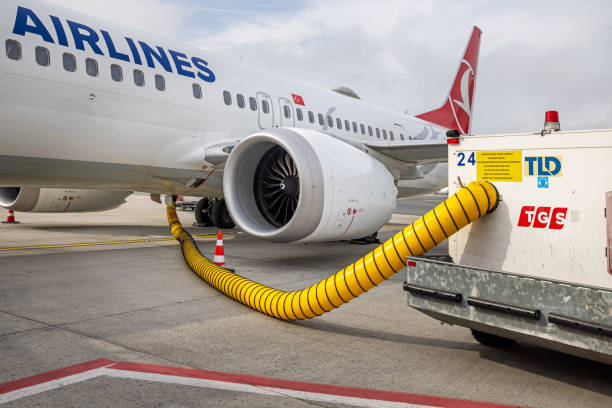
Aviation jet fuel is the lifeblood of modern air travel. As a highly specialized and meticulously refined substance, it is engineered to meet the rigorous performance and safety standards required for aircraft powered by gas-turbine engines. From commercial airliners to military jets, aviation fuel ensures seamless operation, efficiency, and reliability at high altitudes and across diverse climates.
This comprehensive guide explores the key types of jet fuel, their properties, applications, and the global standards governing aviation fuel usage.
Aviation jet fuel is a petroleum-based product designed specifically for aircraft powered by gas-turbine engines. Unlike ground fuels used in vehicles or industrial settings, jet fuel must perform consistently under extreme pressure and temperature changes, including sub-zero temperatures experienced at cruising altitudes.
Jet fuel consists of a complex mixture of hydrocarbons. It undergoes stringent refining processes to meet the operational and safety demands of aviation. The primary commercial grades include Jet A, Jet A–1, and Jet B, each formulated to support specific climatic and operational conditions.
Primary use: Common in the United States
Freezing point: −40°C (−40°F)
Flash point: Above 38°C (100°F)
Global standard fuel used in most countries outside the U.S.
Lower freezing point: −47°C (−53°F), ideal for long-haul and high-altitude flights
Includes anti-static additive for enhanced safety
Both Jet A and Jet A–1 are clear to straw-colored kerosene-based fuels that offer high energy density, consistent combustion, and exceptional thermal stability. The lower freezing point of Jet A–1 makes it the preferred choice for international aviation operations.

Military aviation uses a separate classification system known as the JP (Jet Propellant) series. These fuels are tailored for defense and tactical applications and often include advanced additives for:
Anti-corrosion
Anti-icing
Enhanced thermal stability
JP–8: Equivalent to Jet A–1, but with military-specific additives
JP–4: Similar to Jet B, used for cold-weather and tactical operations
These fuels undergo additional testing to meet the demands of military engines and mission-critical reliability.
Aviation jet fuel contains specialized additives that enhance performance and ensure safety:
Anti-static agents: Prevent ignition due to static discharge during fueling
Antioxidants and corrosion inhibitors: Protect fuel systems and prolong storage life
Icing inhibitors: Prevent water condensation and ice crystal formation at altitude
These additives are essential to maintain the integrity of gas-turbine engines, especially during long-haul flights at high altitudes.
In some fuel trading discussions, the term “JP54” is misleadingly used to refer to aviation fuel. However, JP54 is not a recognized fuel grade in current refinery production or aviation specifications.
Instead, Jet A and Jet A–1 are the legitimate and standardized fuels used across the commercial aviation sector. The perpetuation of “JP54” is often tied to misinformation or outdated terminology and should be avoided in professional aviation or trading contexts.

Predominantly uses Jet A
Jet A–1 is the global standard due to its superior cold-weather performance
Utilize TS–1, a similar fuel with regional specifications
The aviation industry adheres to international standards, such as those set by ASTM (D1655) and DEF STAN (91-091), ensuring compatibility and safety across borders.
Aviation jet fuel is more than just a combustible liquid—it is a critical enabler of modern air transportation. From the standardized Jet A and Jet A–1 to the specialized Jet B and JP military grades, each type plays a distinct role in powering aircraft with efficiency, reliability, and safety.
As the aviation industry explores alternative fuels and sustainable solutions, jet fuel will continue to evolve. However, its foundation will always rest on the precision engineering and global standardization that allow aircraft to soar through the skies with unmatched confidence.